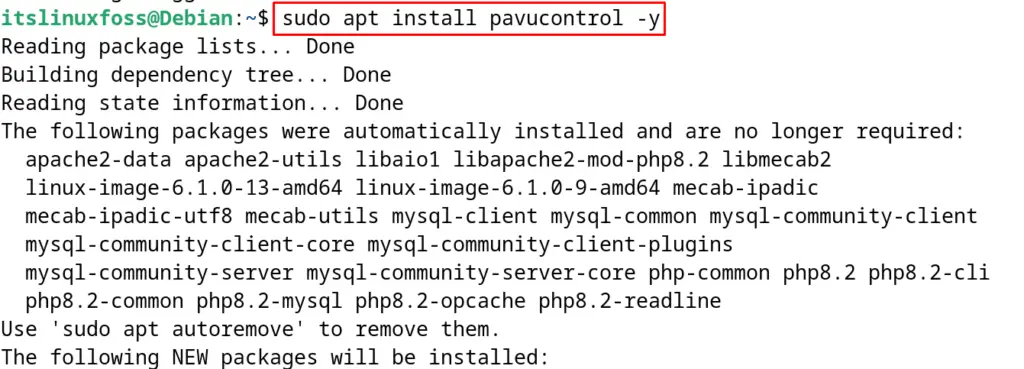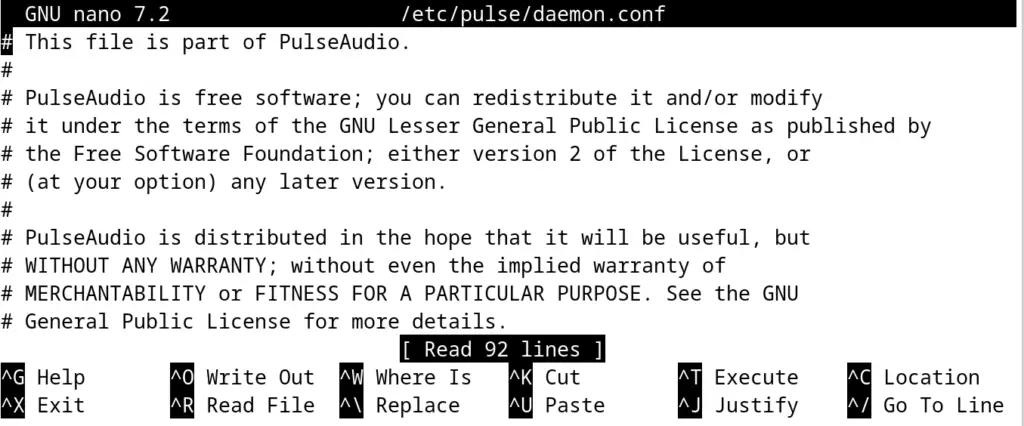PulseAudio is a network-capable sound server that works like a proxy and it accepts the sounds in the background of the processes from one or multiple input sources. After manipulating the input voices, they are redirected towards the sound card or other processes.
PulseAudio comes pre-installed on most Debian desktop environments, but if it is not installed, then follow the instructions explained in this post to install it on Debian.
Start the post with the following outline:
- What are the Key Features of PulseAudio
- What is the Installation Method of PulseAudio on Debian
- How to Configure PulseAudio on Debian
- How to Restart PulseAudio on Debian
- What if the Sound Suddenly Becomes too Loud on PulseAudio
- What if the Input/Output Devices are not Detected on PulseAudio
- How to Restrict the Excessive CPU Usage and Distortion with PulseAudio
- How to Uninstall PulseAudio on Debian
What are the Key Features of PulseAudio?
The notable features of PulseAudio are explained:
- It supports high-quality sound mixing
- It supports multiple output sound cards to mix the sound
- It supports a large set of client libraries
- It has extensible architecture modules
What is the Installation Method of PulseAudio on Debian?
To install the PulseAudio on Debian, run the commands explained in the next steps.
Step 1: Update the Package List
First, update the Debian’s package list to ensure all the packages are updated to their recent versions:
$ sudo apt update

Step 2: Find PulseAudio on Debian
Now find the package of PulseAudio in Debian’s package list with the execution of the command:
$ sudo apt show pulseaudio

Step 3: Install PulseAudio on Debian
Install the displayed package of the “PulseAudio” on Debian by running the command:
$ sudo apt install pulseaudio -y

Step 4: Install the GUI of PulseAudio (Optional)
This step is optional and if you want to install the graphical user interface on Debian, run the command:
$ sudo apt install pavucontrol -y

Step 5: Verify the PulseAudio Installation
To validate the successful installation of the “PulseAudio” on Debian 12, use the command:
$ pulseaudio --version

The displayed version is the confirmation that the package of the “PulseAudio” has been installed on Debian.
How to Configure PulseAudio on Debian?
When the PulseAudio has been installed on Debian, it’s time to configure it. For the configuration of “PulseAudio”, follow the next explained instructions.
Step 1: Launch the PulseAudio
Open the GNOME application’s menu and search for “PulseAudio”. Click on the searched results to launch the application:

Step 2: Set the Output Devices
To configure the output, click on “Output Devices” and drag the bar to the right or left to increase or decrease the output sound as shown:

Also, users can silence the output sound by clicking on the shown icon:

Step 3: Set the Input Devices
Like the Output volume, users can set the frequency of the input sound by dragging the slider to the right or left position:

Step 4: Set the Configuration Tab
Click on “Configuration” to select the sound profiles from the list displayed as shown below:

Step 5: Set the Playback
The “Playback” option is used to control the sounds of each of the applications individually. Each application can be managed from the “Playback” option of PulseAudio:

Step 6: Set the Recordings
Record the playing audio files by selecting the “Recording” tab and selecting the options such as recording volume as shown:

How to Restart PulseAudio on Debian?
If the changes are made in the configuration of PulseAudio, then run the following command to restart PulseAudio:
$ sudo systemctl --user restart pulseaudio.service
What if the Sound Suddenly Becomes too Loud on PulseAudio?
Sometimes, the playing sound on the PulseAudio becomes too loud even if it is muted. If this happens, open the configuration file of PulseAudio using the nano text editor:
$ sudo nano /etc/pulse/daemon.conf

Add the following line in the opened file and close the file by saving it:
flat-volumes = no

What if the Input/Output Devices are not Detected on PulseAudio?
If the input device or the output device is not detected by PulseAudio, then remove the configuration file of PulseAudio:
$ rm -r ~/.config/pulse /tmp/pulse-*
Restart the PulseAudio service:
$ sudo systemctl --user restart pulseaudio.service
How to Restrict the Excessive CPU Usage and Distortion with PulseAudio?
To restrict the excessive CPU usage and distortion while using PulseAudio, open the configuration file and add the following line:
load-module module-udev-detect tsched = 0
How to Uninstall PulseAudio on Debian?
To uninstall and remove the installed application of “PulseAudio”, execute the command in the terminal:
$ sudo apt purge pulseaudio -y

Now the installed package of “PulseAudio” has been removed and also all its configuration files are removed.
Conclusion
PulseAudio can be installed on Debian with the execution of the “sudo apt install pulseaudio -y” command in the terminal. It is used to mix and manipulate the input sounds on Debian to make it more entertaining.
This post has explained the installation and configuration of the PulseAudio on Debian with a complete step-by-step guide.
